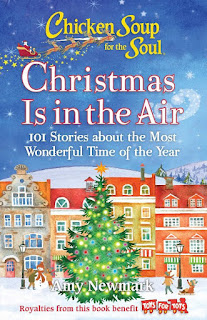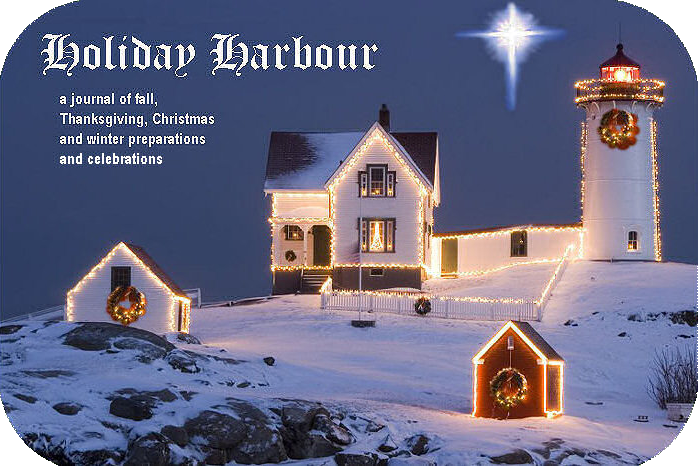1621: A New Look at Thanksgiving, Catherine O'Neill Grace and Margaret M. Bruchac
A whole myth has grown around the 1621 report from Plymouth of the Separatists (history later referred to them as "Pilgrims") holding a harvest festival in the autumn of that year to which they invited the Native tribe who had helped them get through the first winter, all told from the point of view of the European settlers. The Pilgrim village and the reproduction of the
Mayflower have long told only this version, but in the past 30 years progress has been made and now the settlement tells both sides of the story, with Wampanoag people recreating the life of their ancestors.
As Alistair Cooke explained so long ago in his America series, the Pilgrims, and later the Puritans, who came to the American shores were not "model" Christians, and were not just there for religious freedom. Their belief was diametrically opposite to those of the natives: if they did not come to this new land and improve it—make farms or a city or some type of business—they were sinners in the eyes of God. The Wampanoag, on the other hand, believed they were placed on the earth with the express blessing of their Creator, to take their living from the land as it was. Naturally, these two ideas would clash. Sadly, the Europeans possessed more power than the Natives. They were pushed to the sidelines, converted to Christianity if possible, and driven off their birthright given to them by the Creator. Many were killed and their culture was suppressed.
This book from National Geographic, for children, gently tries to set the record straight about the myths of the first Thanksgiving while providing information about the original inhabitants of the land the Wampanoag called Patuxet.
The Thanksgiving Treasure, Gail Rock
In 1972 CBS asked executive Alan Shayne to come up with a Christmas special in the vein of their previous year's hit,
The Homecoming: A Christmas Story. From the postwar memories of his co-worker, Roberta Gail Rock, Shayne, Rock, and Eleanor Perry came up with
The House Without a Christmas Tree, featuring bold, artistic, and stubborn 10-year-old Addie Mills. This sequel, aired the following year, was also very popular. Rock later novelized all four of the Addie Mills CBS specials.
Shayne recounts in his book A Double Life that once given the germ of the idea of the special, he asked Gail Rock to write down all her memories of her childhood. She must have written a prodigious memoir, as the books include details that couldn't possibly be squeezed into a 75-minute special. As in its predecessor novel, we learn more about Addie's relationship with her best friend, her father, and her grandmother, and her encounter with what will be a new friend: crusty, crabby elderly Walter Rhenquist, who owes Mr. Mills money and won't pay him. When Addie's beloved teacher Miss Thompson suggests, during a lesson about Thanksgiving, that people should try to befriend their enemies, it sets into motion a series of events that involve Addie, Rhenquist, and a horse named Treasure.
There are little changes and additions from the special: we hear about the path Addie and her best friend have worn between their houses; the school conversation about Thanksgiving goes a little differently and the poem featured is not quoted; where in the television story cousin Henry calls Grandma "your grandmother," implying Henry is not also her grandson, the book Henry does call her "Grandmother"; Walter Rhenquist tells a third story about his old friend Pearlie Blake; Addie talks about an event we only see the very end of in the film.
At once amusing, sad, thoughtful, and troubling, and a snapshot of midwestern life during post-war Nebraska, The Thanksgiving Treasure is a fine followup to the sterling original story.










 Many years ago I found, on the remainder shelf, or perhaps at a book sale, a pristine copy of A Christmas Carol published by Candlewick Press, with absolutely exquisite illustrations by P.J. Lynch. I had no need to buy another copy of the Carol, having already replaced my second edition annotated copy with the third edition of the annotated copy, plus having it in an illustrated version based on the George C. Scott film, plus several books of “short" stories which included the complete Carol. Not to mention that I had an e-book version as well!
Many years ago I found, on the remainder shelf, or perhaps at a book sale, a pristine copy of A Christmas Carol published by Candlewick Press, with absolutely exquisite illustrations by P.J. Lynch. I had no need to buy another copy of the Carol, having already replaced my second edition annotated copy with the third edition of the annotated copy, plus having it in an illustrated version based on the George C. Scott film, plus several books of “short" stories which included the complete Carol. Not to mention that I had an e-book version as well!
